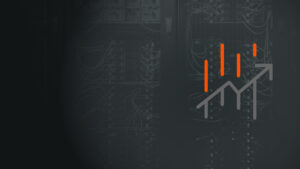But moving these business-critical assets to modern platforms isn’t enough if the knowledge and skills to run and optimize them are not transferred as part of the journey.
A successful and smooth transition comes down to bridging the knowledge gap between teams and employees that have different language and application expertise.
A known but difficult problem
The ambition to share knowledge – and awareness of its importance for short and long-term business goals – is not new. In fact, I remember hearing about the “knowledge and skills gap” over a decade ago when I was entering the industry. And it is still a problem today.
According to findings from the 2021 LzLabs Mainframe Modernization Survey, 88% of senior IT decision-makers are concerned about the potential skills gap in their mainframe team. And over half (56%) agree their organization hasn’t properly implemented a succession plan for new employees to absorb the knowledge required to maintain legacy mainframe architectures.
Given it is still a major talking point, there is no doubt that progress to shortening (and eliminating) the knowledge gap has been slow. But that isn’t for want of trying. Indeed, the proportion of IT training related to the mainframe has increased to 41% in 2021, compared to 32% in 2019.
The issue is that, until recently, knowledge transfer between mainframe experts and those familiar with other platforms has been difficult. On the one hand, junior staff are less versed in the mainframe as their education has focused on modern platforms and languages such as Java or Python. Additionally, if you want to move a mainframe application to a modern environment without losing the value embedded in these applications developed over many years, you can’t suddenly remove mainframe experts and their knowledge from the equation.
Some may say that this is solved by simply converting the ‘legacy’ code to modern languages to allow other programmers to work on them. But it’s not that simple. For instance, direct mainframe to Java transformation doesn’t create Java that can be directly maintained by a Java developer as it still uses the structural pattern of Cobol or Pl1 Programs which is far away from object-oriented code.
The organizations we work with know that modernization is a must. And they believe in the power of diversity and a combination of experiences when it comes to meeting business demands. It is fuelling a growing movement to find a solution where collaboration and knowledge transfer is possible as part of the modernization journey.
A solution that works for everyone
The modern IT environment should let existing applications and expertise thrive and enable efficient knowledge transfer that supports a smooth transition.
LzLabs’ Software Defined Mainframe (SDM) uses an incremental and gradual modernization process that provides the modern platform needed to meet business demands, and an environment for faster and easier knowledge transfer.
The SDM is extremely recognizable to mainframe experts. In fact, a lot of the functions and processes they use when working on mainframe applications are identical on SDM. For instance, because data is stored in native EBCDIC format and uses the same datatypes mainframe experts don’t need to learn a new SQL Syntax and can rely on their existing DB2 zOS skills. And SDM’s transaction monitor – LzOnline – uses similar operational principles as the CICS Transaction Monitor used on the mainframe.
These similarities make it easier for them to transition to, and work on, a new platform. Plus, because the core principles remain the same, it is far easier to teach colleagues who have limited experience on the mainframe itself.
Speaking of those from a different technical background, SDM – and its use of the x86 platform – makes their life easier, too. They can develop the necessary skills to run business-critical applications on a platform they are familiar with, making it a less time-consuming and complicated process. For instance, they can use a modern web interface to configure and handle an application instead of the green screen within the mainframe architecture.
The incremental approach of SDM also means there is no “Day Zero”. By this, I mean no moment where everyone must be up to speed on every application and all relevant training complete. Because of the SDM’s containerized approach, applications and assets can be moved piece-by-piece and knowledge transfer can be an ongoing process where different skills, individuals, and expertise are prioritised depending on the migration schedule.
Bridging the gap
The time is now for organizations to migrate critical applications away from the mainframe as they look to keep up with wider business demands and stay ahead of the competition.
To do this effectively, bridging the knowledge gap and embracing a collaborative culture is critical and solutions like SDM help bring teams closer, quicker and with less risk by removing the traditional hurdles that prevent a smooth transition from mainframe to modern platforms.





